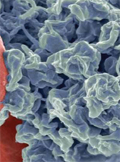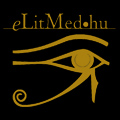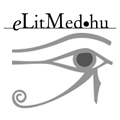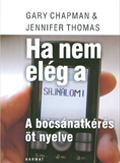The eLitMed.hu medical portal uses computer cookies for convenient operation. Detailed information can be found in the Cookie-policy.
Lege Artis Medicinae - 2011;21(11)
Content
[Perioperative management of patients with coronary stent undergoing noncardiac surgical procedures - Part II. - Algorythm of emergency and perioperative treatment decisions]
[The aim of percutaneous coronary intervention (PCI) is to optimise coronary and cardial status, and thus improve short- and long-term outcomes. It is known from large Western databases that stent implantation is performed during 77-85% of coronary interventions, which means hundreds of thousands of patients with new stent every year. The majority of patients need to take dual platelet aggregation inhibitor, namely acetyilsalicylic acid and thienopyridin - most often clopidrogel - following stent implantation. It presents a major therapeutic dilemma when these patients need noncardiac surgery. First, the surgery should be performed with the least blood loss possible, which would be optimally achieved by suspension of the platelet aggregation inhibitor therapy that cannot be stopped during the critical period after stent implantation. Second, stent thrombosis should be avoided, which can only be achieved if platelet aggregation inhibitor therapy is continued. The aim of our paper is to summarise the current professional guidelines and the current risk estimation in the perioperative management of patients with coronary stent. In the second part of the article, we summarise the preoperative preparation of the patient, assessment of coronary status and cardial medication, and the optimal time and location of the surgery. We present the decision principles regarding the risks of perioperative bleeding and stent thrombosis, and the need to continue platelet aggregation inhibitor therapy.]
[50 years of tolperisone in clinical practice]
[Tolperisone is a centrally acting muscle relaxant that has both antispasticity and antispasmodic properties, but lacks the sedative effect of other muscle relaxants. In the past 50 years, millions of patients with spasticity due to neurological diseases and painful reflex muscle spasm have been treated with this drug. Although few welldesigned, double blind, controlled clinical trials have been published, the efficacy of tolperisone in the treatment of both spasticity and painful reflex muscle spasm is convincing. The tolerability and safety of the drug are well documented. In this respect, one of its greatest advantages is that it has no sedative effect, does not lengthen reaction time, and does not interfere with driving. Further, well-designed controlled trials are clearly required for widening the use of this excellent drug.]
[Antihypertensive therapy in patients with COPD 699 - The significance of nebivolol]
[The occurrence of hypertension associated with chronic obstructive pulmonary disease (COPD) is increasing. Recognising COPD is important in order to choose the appropriate antihypertensive drugs. Antihypertensive drugs that can be used to treat patients with hypertension and COPD include diuretics, ACE-inhibitors, angiotensine receptor blockers (AT1 receptor antagonists) and calcium antagonists, as well as cardioselective beta blockers, as these drugs decrease total and cardiovascular mortality. Of these agents, the importance of the most cardioselective one, nebivolol should be stressed, as this drug has no clinically significant effect on parameters of respiratory function, and, through its additional effects (namely by increasing the synthesis of NO), it has a beneficial effect on COPD-related deterioration of respiratory functions, haemodynamic alterations (cor pulmonale) and local factors that participate in the respiratory inflammation and endothelial dysfunction.]
[The role of metformin in the glucose-lowering therapy of patients with type 2 diabetes]
[Metformin is the oral antidiabetic drug of choice for patients with type 2 diabetes. Its effect is predominantly based on the reduction of insulin resistance by inhibiting hepatic glucose production. Metformin can be used as an initial oral antidiabetic drug at the start of, or in case of the failure of lifestyle modifications. Metformin is also used in dual or triple oral antidiabetic combinations, however, its use should not be suspended even if initiation of insulin therapy is indicated in patients with type 2 diabetes. Metformin does not increase bodyweight and the risk of hypoglycaemia, and recent data suggest that it decreases the risk of tumour development. Today, an extended- release (XR) formulation is also available besides the traditional one, which not only simplifies the treatment, but might also reduce the incidence of gastrointestinal adverse effects.]
[“Boys as victims”, or the potential public health consequences of childhood physical abuse]
[BACKGROUND - Whereas the scientific literature regarding physical abuse primarily focuses on female victims, few studies have been performed on the childhood abuse of men. The aim of our study was to examine the potential effects of childhood physical abuse of men on adult mental health status. METHODS - Data of 4675 male participants of the Hungarostudy nation-wide representative survey were analyzed. RESULTS - Altogether almost 13% of our study group reported physical abuse by a parent or other significant person. Compared with men who did not report abuse, depression, suicidal thoughts and attempts were significantly more common among abused men. Smoking, alcohol- and drugabuse, anxiety disorders and sleeping disorders also had a higher occurence. Moreover, we established that abused men had a significantly greater risk of marital distress and were more likely to have fewer children. Interpretation of the results in a multivariate model indicated that physical abuse is a determinate and independent risk factor of depression, suicidal thoughts and attempts, smoking habits and alcohol abuse. CONCLUSIONS - Our results underline that childhood physical abuse can have a significant effect on numerous mental disorders and maladaptive behaviours in adulthood. However, the deeper understanding of the relationship between physical abuse and mental disorders necessitates further studies.]
[Clinical impact of acetylsalicylic acid resistance in patients with cerebrovascular disease]
[INTRODUCTION - In the past few years, a number of studies have been published about acetylsalicylic acid resistance and its potential clinical consequences. PATIENTS AND METHODS - 281 patients with chronic cerebrovascular disease have been involved in our study. The patients were divided in two groups on the basis of their optical aggregometer results (acetylsalicylic acid responder vs. resistant). We compared the risk profiles, drug therapies, laboratory parameters and clinical outcomes of the two groups. RESULTS - Acetylsalicylic acid resistant patients were more likely to be women [23 (45.1%) vs. 92 (40%) (p<0.05)], to smoke (38% vs. 25%), have hypertension (92 vs. 78%), hypercholesterolaemia (5.69 vs. 4.85 mmol/l), and elevated LDL-levels (3.71 vs. 2.85 mmol/l), triglyceride levels (2.78 vs. 1.97 mmol/l) and hsCRP levels (17.89 vs. 7.09 mmol/l) (p<0.01). The use of statins was more frequent (56% vs. 36%) in the responder group (p<0.01). Platelet aggregation values (triggered by agonists) were significantly correlated with cholesterol, LDL, triglyceride and hsCRP levels (p<0.05). Adverse outcomes were reached in 13 (25.5%) acetylsalicylic acid nonresponders and 32 (13.9%) acetylsalicylic acid responder patients (p<0.01). In a multivariate analysis, however, only smoking (OR: 2.38, CI: 1.77-5.44) and increased LDL (OR: 3.01, CI: 2.34-5.67) and hsCRP levels (OR: 2.44, CI: 1.55-7.02) (p<0.05) were independent risk factors of adverse vascular outcomes. CONCLUSION - On the basis of our results, acetylsalicylic acid resistance was associated with a worse clinical outcome, but it was not an independent risk factor of future ischaemic events. Our results implicate that inappropriate prevention therapy might have a role in this phenomenon.]
1.
Clinical Neuroscience
Is there any difference in mortality rates of atrial fibrillation detected before or after ischemic stroke?2.
Clinical Neuroscience
Factors influencing the level of stigma in Parkinson’s disease in western Turkey3.
Clinical Neuroscience
Neuropathic pain and mood disorders in earthquake survivors with peripheral nerve injuries4.
Journal of Nursing Theory and Practice
[Correlations of Sarcopenia, Frailty, Falls and Social Isolation – A Literature Review in the Light of Swedish Statistics]5.
Clinical Neuroscience
[Comparison of pain intensity measurements among patients with low-back pain]1.
Clinical Neuroscience Proceedings
[A Magyar Stroke Társaság XVIII. Kongresszusa és a Magyar Neuroszonológiai Társaság XV. Konferenciája. Absztraktfüzet]2.
3.
Journal of Nursing Theory and Practice
[A selection of the entries submitted to the literary contest "Honorable mission: the joys and challenges of our profession" ]4.
Journal of Nursing Theory and Practice
[End of Life and Palliative Care of Newborns in the Nursing Context]5.
Journal of Nursing Theory and Practice
[Aspects of Occupational Health Nursing for Incurable Patients ]
















